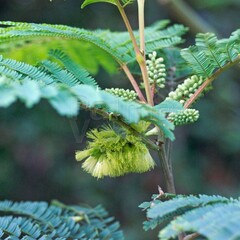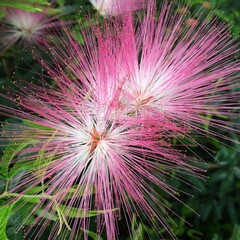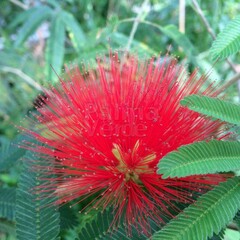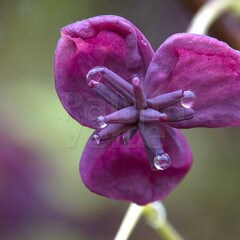Albizia julibrissin or Persian sleeping tree or silk tree as it is also belongs to the subfamily Mimosaceae, which also includes the Mimosa or Acacia. The Albizia julibrissin grows as a shrub or tree shape.
When the tree is in bloom from the end of June to October, many will be amazed by the beautiful bright pink / purple inflorescence. Albizia's bloom from their second or third year and the bloom becomes more and more reluctant as the Albizia grows older.
The Albizia julibrissin gives an extra tropical accent to your garden and just to see the lush leaves on this tree, it is wonderful to see.
The Albizia julibrissin has double-sprung, sickle-shaped leaves that resemble a frond.
Leaves are folded at night, which is why it is called the sleeping tree.
Half an hour before the sun goes down, the leaves slowly close.
The silk tree (also called so because of the silky fine flowers) feels at home in a sheltered warm place in the full sun and is well hardy.
The more sun in the summer, the more it blooms and the stronger the new shoots will become. In a place where there is half shadow, the Persian sleep tree also does well.
The Albizia julibrissin does not demand much if it is not too acidic and the ground is well drained. Never use (fertilized) garden soil if you want to enrich the planting hole in the open ground. If you do, use good quality potting soil.
Pruning should only be done when the plant is too large. It is best to let the plant grow. When you do prune the best time to do this is in early spring. When you prune in March however, the chance of flowers sharply decrease. When you prune in autumn you will have flowers but face another problem. Pruning it this late in the year increases the chances of the branches to die. If the plant does not produce new sprouts after pruning it is likely the branch will die off.
The Albizia Julibrissin turnes out to be surprisingly hardy, the winter of 2008/2009 has survived with us on an open surface -23ºC in a frosty period of 5 weeks.
Plants lose all their leaves in winter, young plants do not have side branches when delivered after winter, which appear again in the course of spring.
Protect young plants from frost until the trunk has a diameter of 2 cm or more, after which no winter protection is needed. Make sure when you plant young trees that you have good drainage. The plant hates wet feet when it is freshly planted. Always be sure to keep the bottom of the trunk above the ground.
Winter hardiness zone 6a (-20ºC).





























